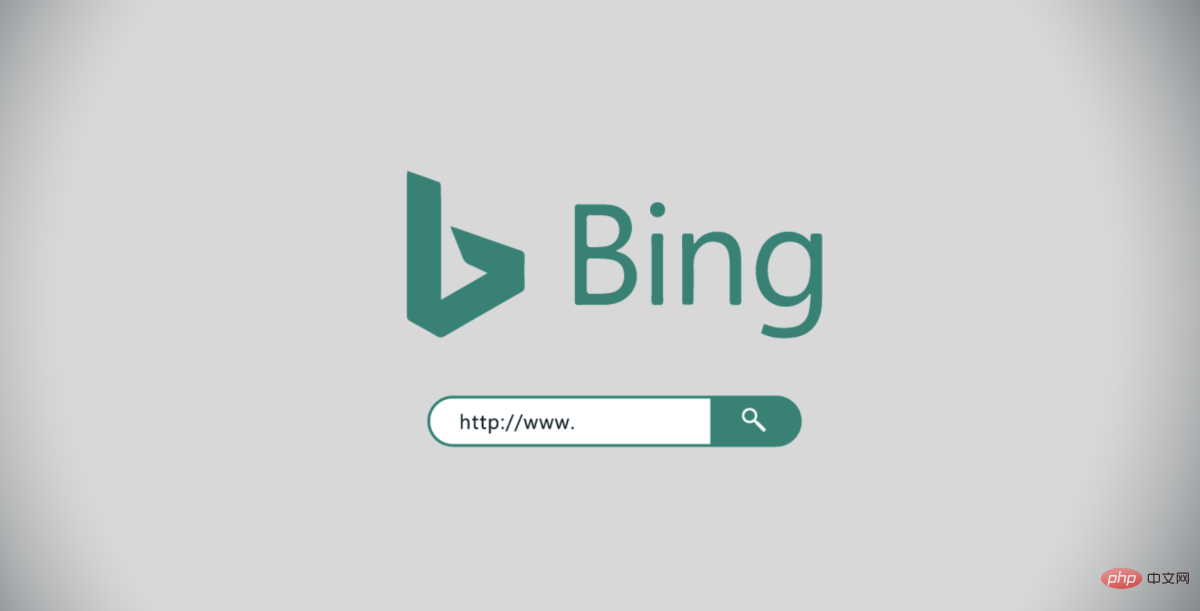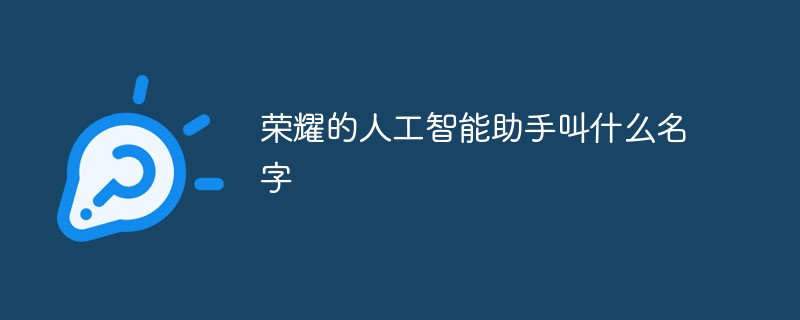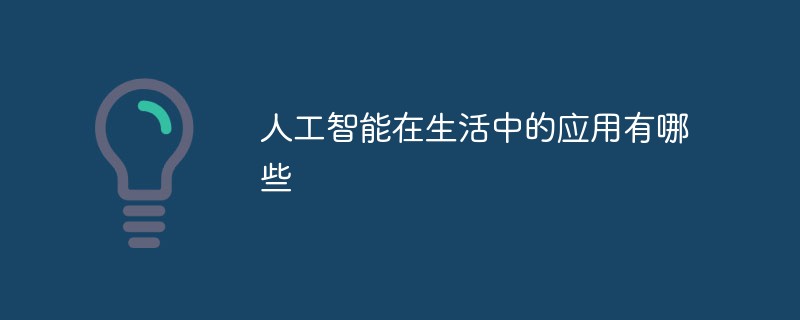 Backend Development
Backend Development Python Tutorial
Python Tutorial Explore the algorithms and principles of gesture recognition models (create a simple gesture recognition training model in Python)
Explore the algorithms and principles of gesture recognition models (create a simple gesture recognition training model in Python)
Gesture recognition is an important research area in the field of computer vision. Its purpose is to determine the meaning of gestures by parsing human hand movements in video streams or image sequences. Gesture recognition has a wide range of applications, such as gesture-controlled smart homes, virtual reality and games, security monitoring and other fields. This article will introduce the algorithms and principles used in gesture recognition models, and use Python to create a simple gesture recognition training model.
Algorithms and principles used by gesture recognition models
The algorithms and principles used by gesture recognition models are diverse, including depth-based learned models, traditional machine learning models, rule-based methods, and traditional image processing methods. The principles and characteristics of these methods will be introduced below.
1. Model based on deep learning
Deep learning is one of the most popular machine learning methods currently. In the field of gesture recognition, deep learning models are also widely used. Deep learning models learn from large amounts of data to extract features and then use these features to classify. In gesture recognition, deep learning models often use convolutional neural networks (CNN) or recurrent neural networks (RNN).
CNN is a special type of neural network that can effectively process image data. CNN contains multiple convolutional layers and pooling layers. The convolutional layer can extract the features of the image, and the pooling layer can reduce the size of the image. CNN also contains multiple fully connected layers for classification.
RNN is a neural network suitable for sequence data. In gesture recognition, RNN usually uses long short-term memory network (LSTM) or gated recurrent unit (GRU). RNN can predict the next gesture by learning previous gesture sequences. LSTM and GRU can avoid the vanishing gradient problem of RNN, allowing the model to learn longer gesture sequences.
The model based on deep learning has the following characteristics:
- can handle complex gesture sequences;
- can Automatically extract features;
- requires a large amount of data for training;
- takes a long time to train;
- requires high computing resources.
2. Traditional machine learning models
Traditional machine learning models include support vector machines (SVM), decision trees, Random forest etc. These models usually use hand-designed features such as SIFT, HOG, etc. These features can extract information such as shape and texture of gestures.
- ##Traditional machine learning models have the following characteristics:
- Can handle simpler gesture sequences;
- Requires manual design of features;
- The training time is shorter;
- Requires a small amount of data for training;
- The training results are easier to interpret.
- can be quickly designed and implemented;
- requires professional Knowledge and experience;
- can only handle specific gesture types;
- is not suitable for complex gesture sequences.
- can handle simple gestures;
- requires manual Design features;
- The training time is shorter;
- Requires a small amount of data for training;
- The training results are easier to interpret.
import cv2
import os
import numpy as np
IMG_SIZE = 200
def preprocess_data(data_dir):
X = []
y = []
for folder_name in os.listdir(data_dir):
label = folder_name
folder_path = os.path.join(data_dir, folder_name)
for img_name in os.listdir(folder_path):
img_path = os.path.join(folder_path, img_name)
img = cv2.imread(img_path, cv2.IMREAD_GRAYSCALE)
img = cv2.resize(img, (IMG_SIZE, IMG_SIZE))
img = img/255.0
X.append(img)
y.append(label)
X = np.array(X)
y = np.array(y)
return X, y3. Build the model
Next, we will build a model based on a convolutional neural network. Specifically, we will use the Sequential model from the Keras library to build the model. The model contains multiple convolutional and pooling layers, as well as multiple fully connected layers. from keras.models import Sequential
from keras.layers import Conv2D, MaxPooling2D, Flatten, Dense, Dropout
def build_model():
model = Sequential()
model.add(Conv2D(32, (3, 3), activation='relu', input_shape=(IMG_SIZE, IMG_SIZE, 1)))
model.add(MaxPooling2D((2, 2)))
model.add(Conv2D(64, (3, 3), activation='relu'))
model.add(MaxPooling2D((2, 2)))
model.add(Conv2D(128, (3, 3), activation='relu'))
model.add(MaxPooling2D((2, 2)))
model.add(Conv2D(256, (3, 3), activation='relu'))
model.add(MaxPooling2D((2, 2)))
model.add(Flatten())
model.add(Dense(512, activation='relu'))
model.add(Dropout(0.5))
model.add(Dense(29, activation='softmax'))
model.compile(optimizer='adam', loss='categorical_crossentropy', metrics=['accuracy'])
return model4. Training model
接下来,我们将使用准备好的数据集和构建好的模型来训练模型。我们将使用Keras库中的fit方法来训练模型。
X_train, y_train = preprocess_data('asl_alphabet_train') X_test, y_test = preprocess_data('asl_alphabet_test') from keras.utils import to_categorical y_train = to_categorical(y_train) y_test = to_categorical(y_test) model = build_model() model.fit(X_train, y_train, epochs=10, batch_size=32, validation_data=(X_test, y_test))
5.评估模型
最后,我们将评估模型的性能。我们将使用Keras库中的evaluate方法来评估模型在测试集上的性能。
test_loss, test_acc = model.evaluate(X_test, y_test) print('Test accuracy:', test_acc)
结论
本文介绍了手势识别模型使用的算法和原理,并使用Python创建了一个简单的手势识别训练模型。我们使用了基于深度学习的方法,并使用Keras和TensorFlow库来构建和训练模型。最后,我们评估了模型在测试集上的性能。手势识别是一个复杂的问题,需要综合考虑多个因素,例如手势序列的长度、手势的复杂度等。因此,在实际应用中,需要根据具体需求选择合适的算法和模型。
The above is the detailed content of Explore the algorithms and principles of gesture recognition models (create a simple gesture recognition training model in Python). For more information, please follow other related articles on the PHP Chinese website!
 2023年机器学习的十大概念和技术Apr 04, 2023 pm 12:30 PM
2023年机器学习的十大概念和技术Apr 04, 2023 pm 12:30 PM机器学习是一个不断发展的学科,一直在创造新的想法和技术。本文罗列了2023年机器学习的十大概念和技术。 本文罗列了2023年机器学习的十大概念和技术。2023年机器学习的十大概念和技术是一个教计算机从数据中学习的过程,无需明确的编程。机器学习是一个不断发展的学科,一直在创造新的想法和技术。为了保持领先,数据科学家应该关注其中一些网站,以跟上最新的发展。这将有助于了解机器学习中的技术如何在实践中使用,并为自己的业务或工作领域中的可能应用提供想法。2023年机器学习的十大概念和技术:1. 深度神经网
 人工智能自动获取知识和技能,实现自我完善的过程是什么Aug 24, 2022 am 11:57 AM
人工智能自动获取知识和技能,实现自我完善的过程是什么Aug 24, 2022 am 11:57 AM实现自我完善的过程是“机器学习”。机器学习是人工智能核心,是使计算机具有智能的根本途径;它使计算机能模拟人的学习行为,自动地通过学习来获取知识和技能,不断改善性能,实现自我完善。机器学习主要研究三方面问题:1、学习机理,人类获取知识、技能和抽象概念的天赋能力;2、学习方法,对生物学习机理进行简化的基础上,用计算的方法进行再现;3、学习系统,能够在一定程度上实现机器学习的系统。
 超参数优化比较之网格搜索、随机搜索和贝叶斯优化Apr 04, 2023 pm 12:05 PM
超参数优化比较之网格搜索、随机搜索和贝叶斯优化Apr 04, 2023 pm 12:05 PM本文将详细介绍用来提高机器学习效果的最常见的超参数优化方法。 译者 | 朱先忠审校 | 孙淑娟简介通常,在尝试改进机器学习模型时,人们首先想到的解决方案是添加更多的训练数据。额外的数据通常是有帮助(在某些情况下除外)的,但生成高质量的数据可能非常昂贵。通过使用现有数据获得最佳模型性能,超参数优化可以节省我们的时间和资源。顾名思义,超参数优化是为机器学习模型确定最佳超参数组合以满足优化函数(即,给定研究中的数据集,最大化模型的性能)的过程。换句话说,每个模型都会提供多个有关选项的调整“按钮
 得益于OpenAI技术,微软必应的搜索流量超过谷歌Mar 31, 2023 pm 10:38 PM
得益于OpenAI技术,微软必应的搜索流量超过谷歌Mar 31, 2023 pm 10:38 PM截至3月20日的数据显示,自微软2月7日推出其人工智能版本以来,必应搜索引擎的页面访问量增加了15.8%,而Alphabet旗下的谷歌搜索引擎则下降了近1%。 3月23日消息,外媒报道称,分析公司Similarweb的数据显示,在整合了OpenAI的技术后,微软旗下的必应在页面访问量方面实现了更多的增长。截至3月20日的数据显示,自微软2月7日推出其人工智能版本以来,必应搜索引擎的页面访问量增加了15.8%,而Alphabet旗下的谷歌搜索引擎则下降了近1%。这些数据是微软在与谷歌争夺生
 荣耀的人工智能助手叫什么名字Sep 06, 2022 pm 03:31 PM
荣耀的人工智能助手叫什么名字Sep 06, 2022 pm 03:31 PM荣耀的人工智能助手叫“YOYO”,也即悠悠;YOYO除了能够实现语音操控等基本功能之外,还拥有智慧视觉、智慧识屏、情景智能、智慧搜索等功能,可以在系统设置页面中的智慧助手里进行相关的设置。
 人工智能在教育领域的应用主要有哪些Dec 14, 2020 pm 05:08 PM
人工智能在教育领域的应用主要有哪些Dec 14, 2020 pm 05:08 PM人工智能在教育领域的应用主要有个性化学习、虚拟导师、教育机器人和场景式教育。人工智能在教育领域的应用目前还处于早期探索阶段,但是潜力却是巨大的。
 30行Python代码就可以调用ChatGPT API总结论文的主要内容Apr 04, 2023 pm 12:05 PM
30行Python代码就可以调用ChatGPT API总结论文的主要内容Apr 04, 2023 pm 12:05 PM阅读论文可以说是我们的日常工作之一,论文的数量太多,我们如何快速阅读归纳呢?自从ChatGPT出现以后,有很多阅读论文的服务可以使用。其实使用ChatGPT API非常简单,我们只用30行python代码就可以在本地搭建一个自己的应用。 阅读论文可以说是我们的日常工作之一,论文的数量太多,我们如何快速阅读归纳呢?自从ChatGPT出现以后,有很多阅读论文的服务可以使用。其实使用ChatGPT API非常简单,我们只用30行python代码就可以在本地搭建一个自己的应用。使用 Python 和 C
 人工智能在生活中的应用有哪些Jul 20, 2022 pm 04:47 PM
人工智能在生活中的应用有哪些Jul 20, 2022 pm 04:47 PM人工智能在生活中的应用有:1、虚拟个人助理,使用者可通过声控、文字输入的方式,来完成一些日常生活的小事;2、语音评测,利用云计算技术,将自动口语评测服务放在云端,并开放API接口供客户远程使用;3、无人汽车,主要依靠车内的以计算机系统为主的智能驾驶仪来实现无人驾驶的目标;4、天气预测,通过手机GPRS系统,定位到用户所处的位置,在利用算法,对覆盖全国的雷达图进行数据分析并预测。


Hot AI Tools

Undresser.AI Undress
AI-powered app for creating realistic nude photos

AI Clothes Remover
Online AI tool for removing clothes from photos.

Undress AI Tool
Undress images for free

Clothoff.io
AI clothes remover

AI Hentai Generator
Generate AI Hentai for free.

Hot Article

Hot Tools

SublimeText3 Linux new version
SublimeText3 Linux latest version

MinGW - Minimalist GNU for Windows
This project is in the process of being migrated to osdn.net/projects/mingw, you can continue to follow us there. MinGW: A native Windows port of the GNU Compiler Collection (GCC), freely distributable import libraries and header files for building native Windows applications; includes extensions to the MSVC runtime to support C99 functionality. All MinGW software can run on 64-bit Windows platforms.

SAP NetWeaver Server Adapter for Eclipse
Integrate Eclipse with SAP NetWeaver application server.

VSCode Windows 64-bit Download
A free and powerful IDE editor launched by Microsoft

Notepad++7.3.1
Easy-to-use and free code editor






